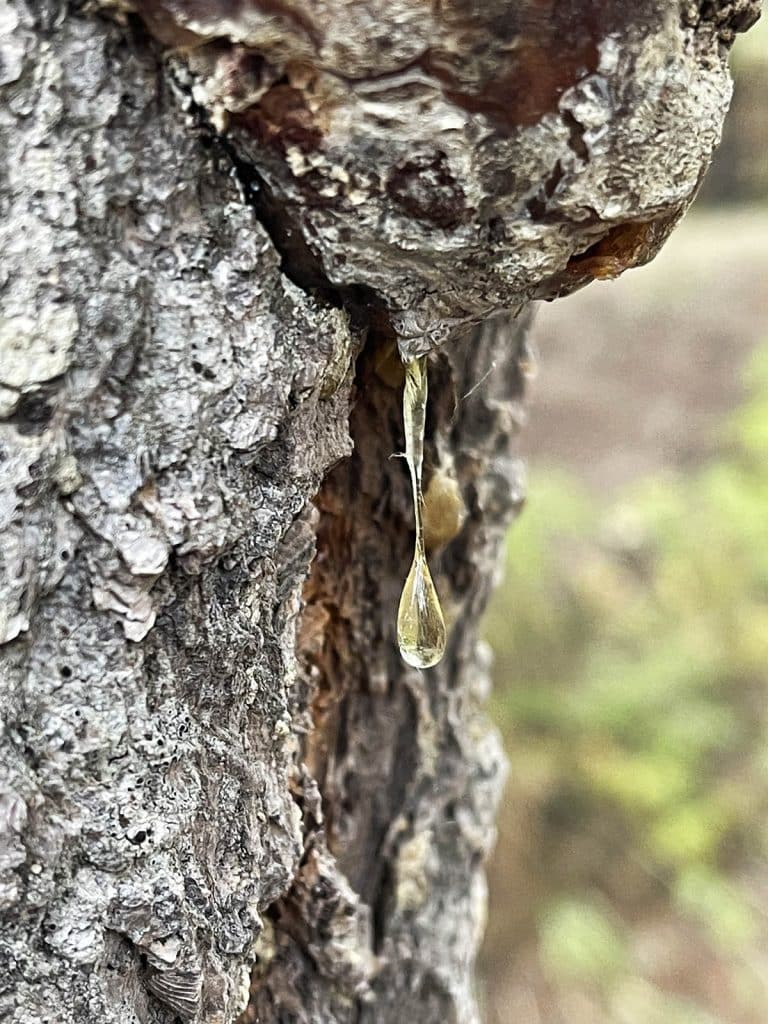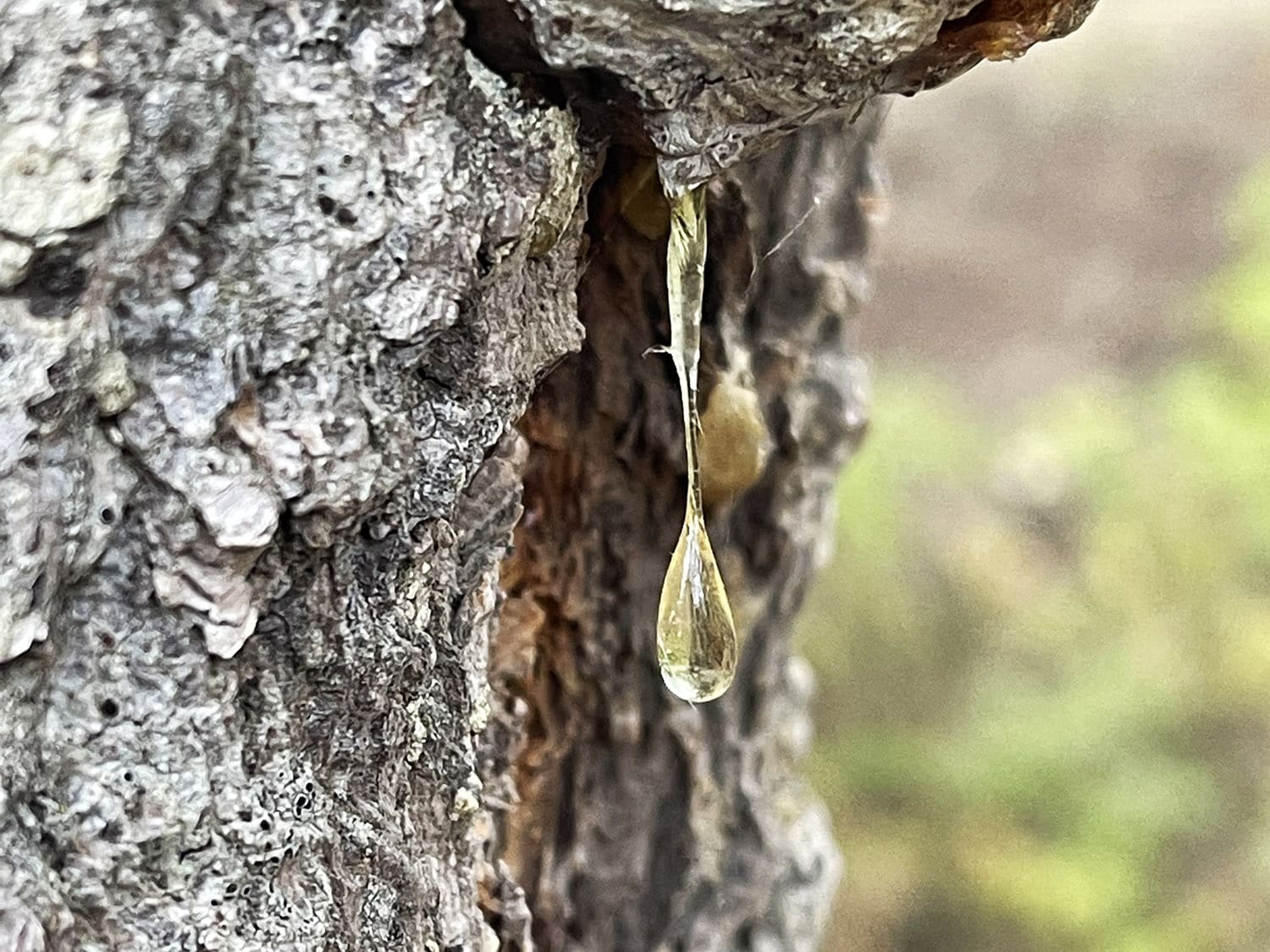One of my favorite things I learned this year in my herbal apprenticeship with Cedar Mountain Herb School was how to harvest and use pine (Pinus spp.) resin — aka pine pitch — from the abundant conifers we have growing all around us in North Idaho.
When you are injured and the skin is broken, what usually happens? You bleed. The blood clots and forms a protective biological bandage over your wound.
Trees do the same thing. When a tree is injured, it exudes a thick, sticky resin called pitch that weeps from the wound and eventually “clots” into a protective barrier that prevents infection and infestation via the injury.
As usual, Mother Nature knows what she’s doing! ♥
In traditional medicine, pine tar is believed to help fight infection, reduce pain, and improve the healing process. According to herbalist Matthew Wood, pine pitch has stimulating, antiseptic and anti-inflammatory actions and is well suited to all sorts of topical applications. It speeds the healing of inflammatory skin irritations, rashes, burns and wounds.
Pine tar is antifungal can be used to treat fungal infections such as ringworm and athlete’s foot. Apply directly to the affected area and cover completely with a bandage (pine tar is very sticky).
In his book Medicinal Plants of the Mountain West, Michael Moore mentions that trementina (pine pitch) is used in New Mexico warmed and blended with butter or fat to treat splinters. The abietic resins increase topical circulation and significantly speed up the foreign body response to eject the splinter.
It can also be used (undiluted) to treat insect bites and stings and other skin irritations.
Pine tar can even be used to treat warts. Apply it undiluted directly to the wart and allowed to dry. Repeat as needed until the wart begins to dry up and eventually disappear.
Even if you’re not planning to formulate anything fancy using pine tar, doesn’t this sound like something you need in your medicine cabinet??
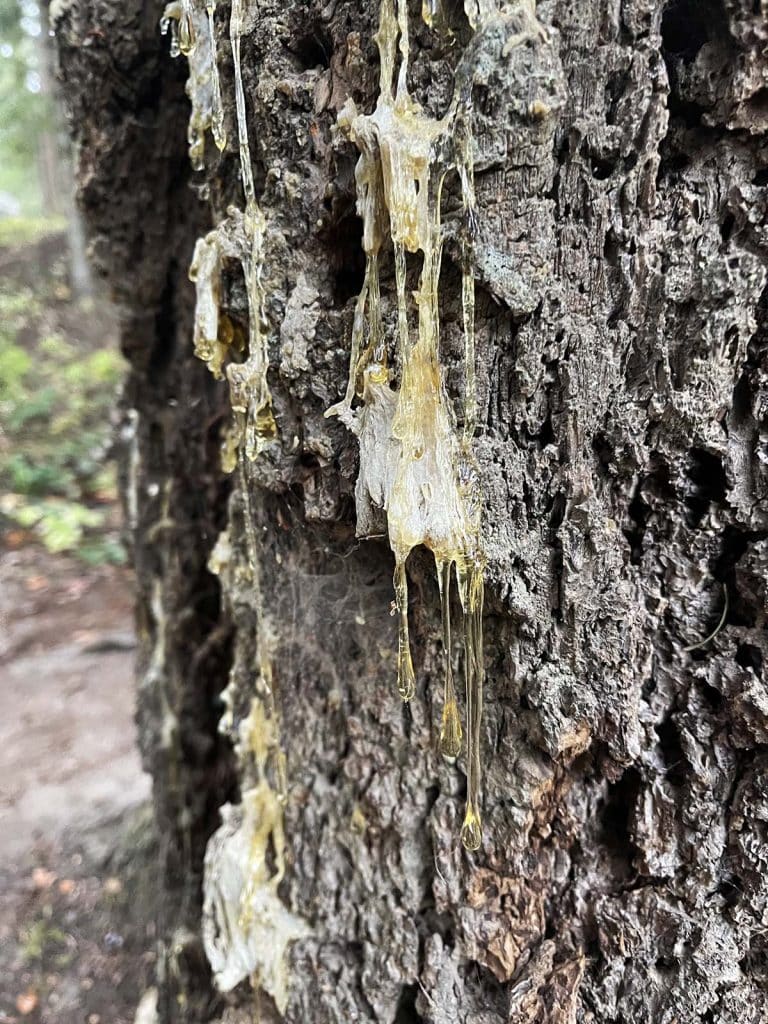
Collecting pine resin is therapeutic and weirdly satisfying. A fellow apprentice observed that she felt a bit like Dr. Pimple Popper extracting the gooey stuff from their pockets in the tree bark. Ewwww! (But also, she has a point…)
A pocket knife or flathead screwdriver and a jar are the tools of the trade:
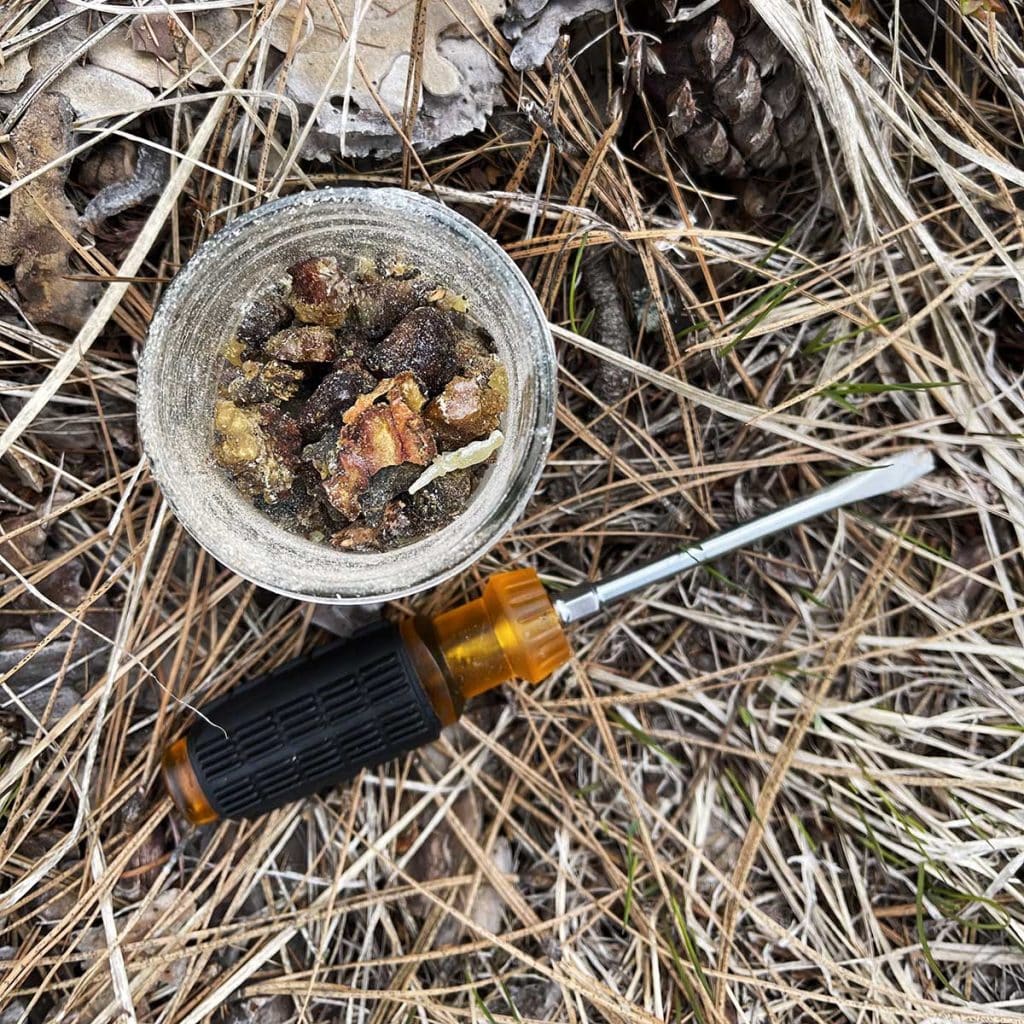
Pro tip: Resin collecting is messy business. Take along a small bottle of alcohol or hand sanitizer to clean your hands when you’re finished harvesting. Be sure to wash off your screwdriver or blade in alcohol too. The sticky resin will easily dissolve in the alcohol.
It’s important to note that an ethical herbalist would never tap or injure a tree to collect its resin. There’s no need to anyway — I promise, you will not have to look too hard to find trees literally dripping with easily accessible resin. Look for old and damaged trees and fallen limbs and you will find resin. So long as you’re not pulling it off the original wound (the tree needs it to protect itself from insects and disease!) this resin is fair game.
So you’ve got a jar overflowing with sticky chunks of pine pitch, now what?
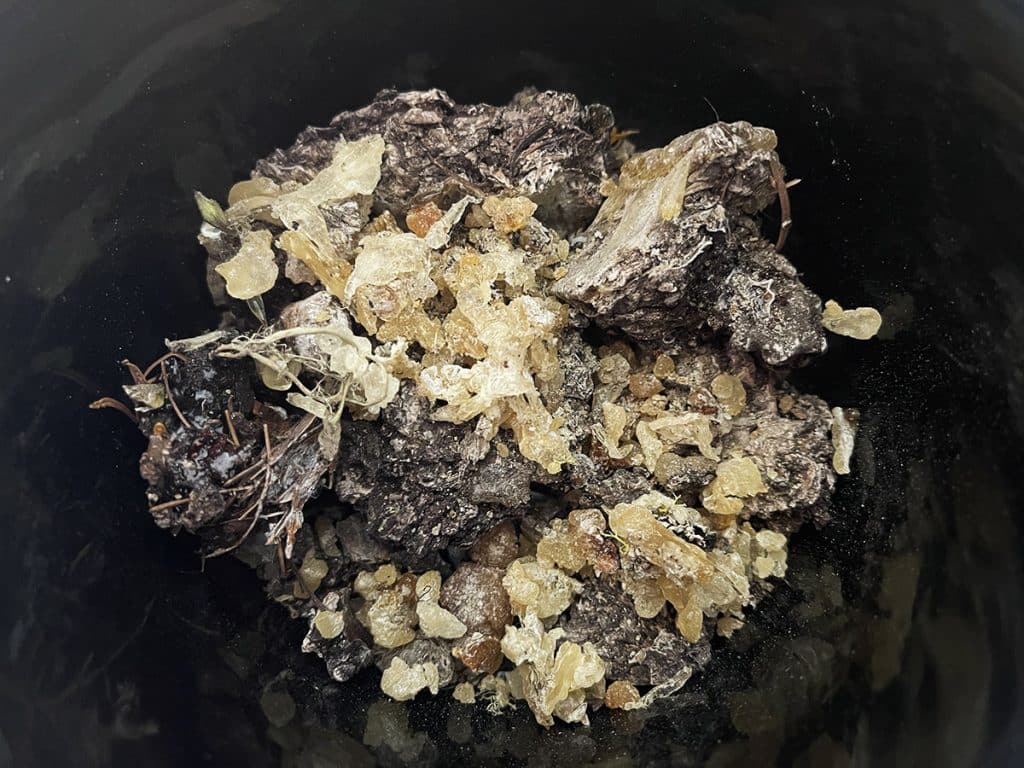
Processing the crude resin into something you can use is actually pretty simple. When heated, the oil soluble parts of the pine resin — primarily the gum rosin — will combine with the oil and the volatile liquid terpene components will evaporate. Since the rosin is brittle at room temperature, combining it with a bit of oil makes it scoopable and much easier to work with.
Because it’s my favorite oil and I might be a teensy bit obsessed, I used tallow to make my pine tar.
Feel free to use your favorite oil or fat, but I generally recommend leaning toward the more stable ones for the best longevity. After all, you dedicated quite a bit of time and effort collecting the pitch, so you want your precious pine tar to last a good long time!
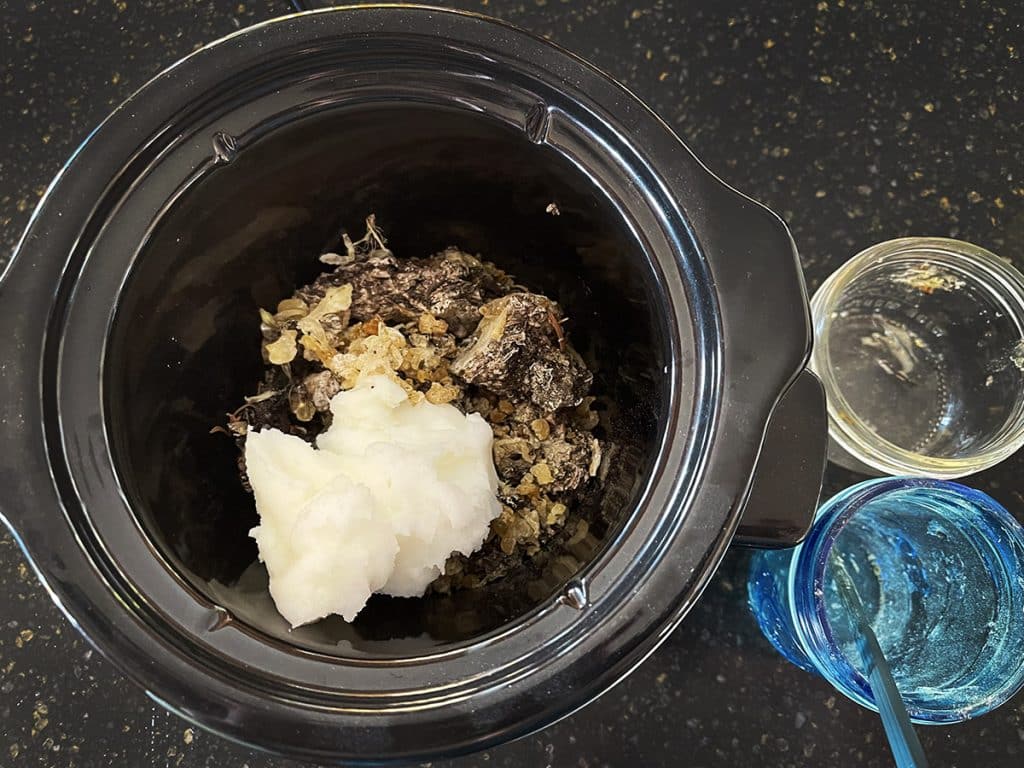
Throw all of your collected pine resin into a small crockpot. Don’t worry about all the twigs, leaves and dirt that likely came along for the ride — you’ll strain all that out later. Add a small amount of oil, approximately 1/3 as much as you have resin. Just eyeball the measurements – it doesn’t have to be exact. Set the crockpot to the ‘low’ heat setting (approximately 190F) and let it do its thing for a few days.
After several hours over low heat, the resin and oil should be starting to meld. Depending on how hard the resin is, it might take two or three days to finish integrating with the oil. I let my crockpot run for nearly three days.
The black, viscous goo smells absolutely heavenly. It will make your house smell like Christmas. ♥
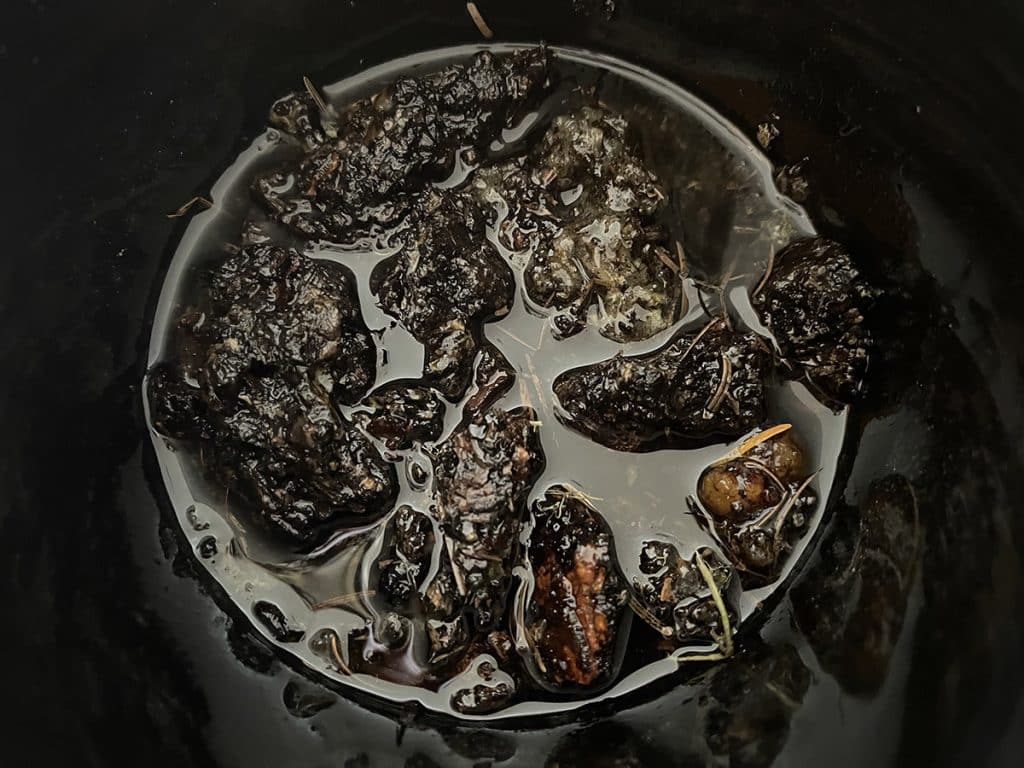
Strain your warm pine tar through a fine mesh strainer into a glass jar. You may need to strain a second time to completely remove all of the sediment. If the mesh is not doing the job, try lining your strainer with a scrap of cheesecloth (that you don’t mind throwing away when you’re done).
After the tar has completely cooled, cover your jar with an airtight lid and store at room temperature out of direct sunlight. Properly stored, a jar of this valuable stuff should last virtually forever.
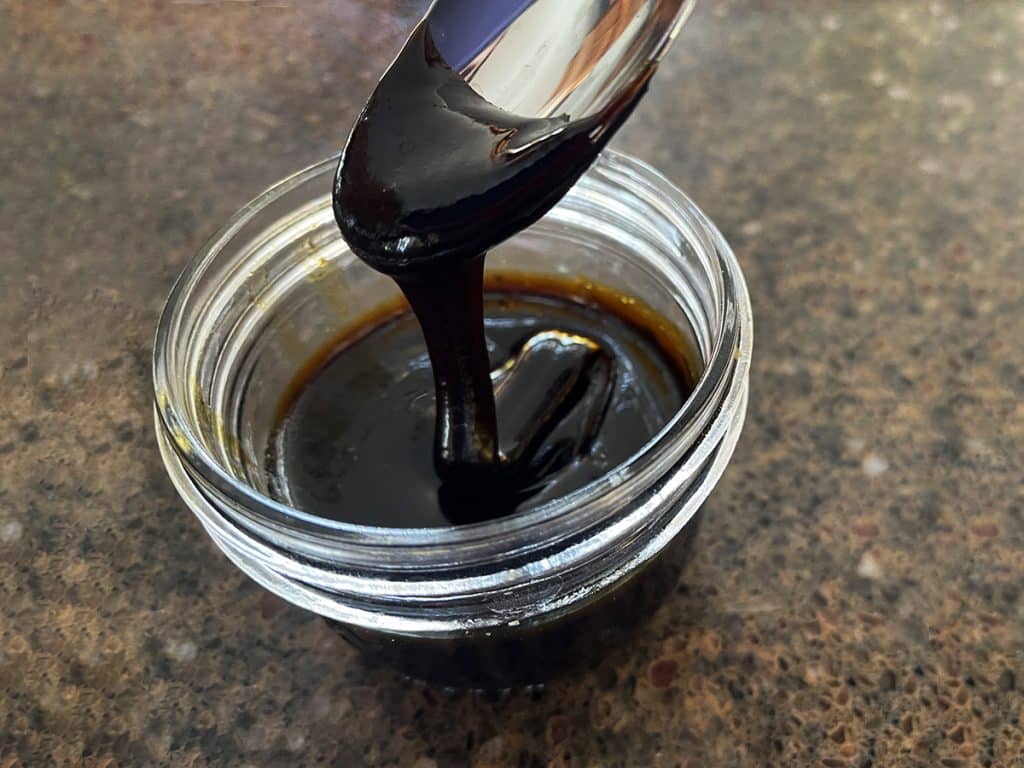
We should probably call this “conifer tar” instead of pine tar, since I wasn’t terribly discriminate about which evergreen tree I was collecting from. That’s okay too! Pine, spruce and firs all produce resin to one degree or another, and they have similar therapeutic properties.
In my humble opinion, making pine tar is absolutely worth the effort. It’s a useful addition to therapeutic salves, lotions, soaps and all sorts of topical preparations.
Or simply used as is.
(You’ll be thrilled to have this in your medicine cabinet the next time you or someone you love gets a splinter or a wart!)
